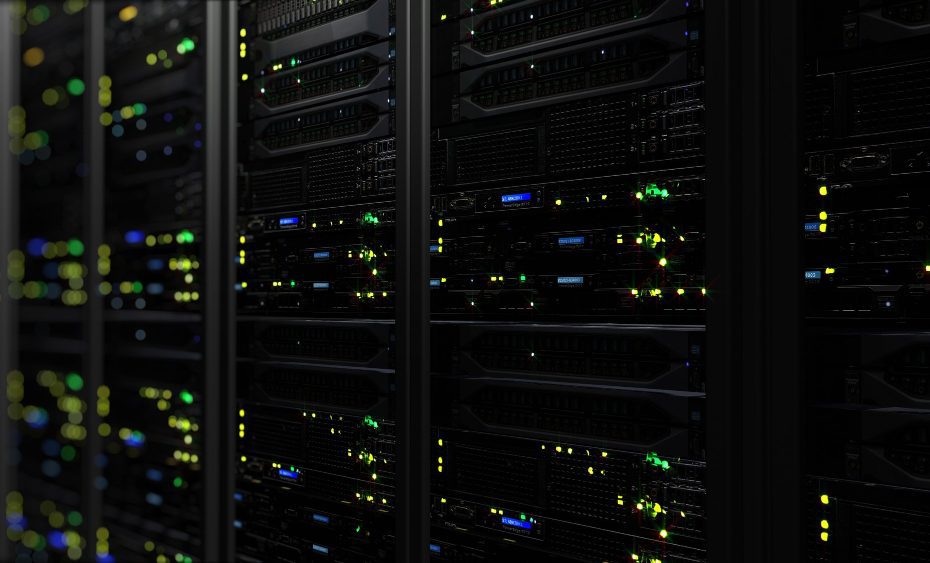Can I backup my NAS to OneDrive?
Backing up your NAS (Network Attached Storage) device to cloud storage services such as OneDrive can provide you with an added layer of security and flexibility. OneDrive, Microsoft’s cloud storage platform, allows you to store and access files from anywhere and on any device. But can you use OneDrive to backup the data stored on your NAS device? Let’s explore this topic in more detail.
Understanding NAS and OneDrive
NAS is a storage device that connects to your home or office network, allowing multiple computers and devices to access and share files. It often offers features like RAID redundancy, remote access, and data protection. On the other hand, OneDrive is a cloud storage service that provides a convenient way to store, synchronize, and share files online.
While NAS devices primarily offer local storage and data protection capabilities, integrating them with cloud storage services like OneDrive can enhance their backup capabilities and provide an off-site storage solution.
The Benefits of Backing up NAS to OneDrive
By backing up your NAS to OneDrive, you can enjoy several benefits:
- Off-site Backup: Storing your NAS data on OneDrive ensures that your files are stored in a separate physical location, protecting them from localized disasters like fire or theft. This provides an additional layer of security for your valuable data.
- Remote Access: Once your NAS data is backed up to OneDrive, you can access it from anywhere with an internet connection. This allows you to retrieve important files or media even when you are away from your NAS device.
- Scalability: OneDrive offers scalable storage options to accommodate your growing data needs. As your NAS data expands, you can easily increase your OneDrive storage space without the need for additional hardware.
“Backing up your NAS with OneDrive provides an extra level of data protection and convenience.”
Compatibility and Integration
The feasibility of backing up your NAS to OneDrive may depend on the compatibility and integration options provided by your NAS device and the available software or applications. Most modern NAS devices offer built-in support for popular cloud storage services, including OneDrive.
To integrate your NAS with OneDrive, you will typically need to configure a synchronization or backup application on your NAS device. These applications allow you to select specific folders or files to be backed up to your OneDrive account. Some NAS devices also provide real-time or scheduled syncing options to ensure that your data is always up to date.
Considerations and Limitations
While backing up your NAS to OneDrive offers numerous advantages, there are some considerations and limitations to keep in mind:
- Data Transfer Speed: Uploading your NAS data to OneDrive may depend on your internet connection speed. Large amounts of data can take a long time to transfer, especially if your internet connection has limited bandwidth.
- Storage Space: OneDrive offers different storage plans, and the amount of space you have available will determine how much data you can back up. You may need to upgrade your OneDrive storage plan if your NAS data exceeds the free storage limit.
- Security and Privacy: When backing up sensitive or confidential data, consider the security measures provided by both your NAS device and OneDrive. Encryption options and secure access protocols should be in place to protect your data during transmission and storage.
In conclusion, while the specifics of backing up your NAS to OneDrive may differ based on your NAS device, software, and internet connection, the integration of NAS and cloud storage services provides a valuable solution for data protection, accessibility, and scalability.
What is the maximum storage for OneDrive?
OneDrive is a cloud-based storage service provided by Microsoft that allows users to store and access their files from anywhere. It offers various storage plans for individuals, businesses, and education institutions. The maximum storage capacity of OneDrive depends on the plan you choose.
Personal
For personal use, OneDrive offers a free plan with 5GB of storage. This storage space can be used to store documents, photos, videos, and other files. If you need more storage, you can upgrade to a paid plan which provides additional space. The maximum storage available for personal use is 6TB (terabytes).
Business
For businesses, OneDrive for Business is available as a part of Microsoft 365 subscription plans. The storage capacity for OneDrive for Business varies depending on the plan you choose. Here are some of the options:
- Microsoft 365 Business Basic: 1TB per user
- Microsoft 365 Business Standard: 1TB per user
- Microsoft 365 Business Premium: 1TB per user
- Microsoft 365 Enterprise E3: Unlimited storage
- Microsoft 365 Enterprise E5: Unlimited storage
For most business plans, each user gets 1TB (terabyte) of storage space. However, the Enterprise E3 and E5 plans offer unlimited storage, allowing organizations to store large amounts of data without any limitations.
“OneDrive provides a convenient and secure way to store and access your files on the go. Whether you’re an individual or a business, there are options available to suit your storage needs.”
In addition to the storage capacity mentioned above, OneDrive also offers options for additional storage add-ons if you require even more space. These can be purchased on a monthly or annual basis.
It’s important to note that the maximum storage capacity of OneDrive may be subject to change as Microsoft updates its plans and pricing. Therefore, it’s always a good idea to check the official OneDrive website for the latest information on storage options.
How do I transfer files over 20 GB?
The Challenge of Transferring Large Files
Transferring files that are over 20 GB in size can be a daunting task as it often exceeds the limitations of standard file transfer methods. Many email services and messaging platforms have file size restrictions that make it impossible to send or receive such large files. However, there are alternative methods and tools available to help you overcome this challenge.
Using Cloud Storage Services
One of the most popular and convenient ways to transfer large files is by using cloud storage services. Providers like Google Drive, Dropbox, and OneDrive offer free and paid plans that allow you to upload and share files of any size. Simply upload your file to the cloud storage service and generate a shareable link that you can send to the recipient.
File Compression and Splitting
If you prefer to transfer files directly without relying on cloud storage, you can compress the large file into a more manageable size using software like WinRAR or 7-Zip. Compressing the file reduces its size and makes it easier to transfer. Additionally, you can split the file into smaller parts and transfer them individually. The recipient can then reassemble the parts to obtain the complete file.
Transfer Protocols: FTP and SFTP
If you have access to a file server, you can use File Transfer Protocol (FTP) or Secure File Transfer Protocol (SFTP) to transfer large files. These protocols are designed for transferring files over the internet and can handle large file sizes efficiently. You will need an FTP/SFTP client software like FileZilla to establish a connection with the server and transfer the files.
Physical Transfer: External Hard Drives
In situations where online transfers are not feasible or time-consuming, physically transferring the files using external storage devices like hard drives or USB flash drives is a viable solution. These devices provide large storage capacities and can be easily connected to computers or other devices to copy and transfer files.
Note: When using physical transfer methods, ensure that the storage device is properly formatted and compatible with the recipient’s system.
In conclusion, transferring files over 20 GB requires alternative methods beyond standard file transfer protocols. Cloud storage services, file compression and splitting, FTP/SFTP protocols, and physical transfer methods offer effective solutions depending on your specific needs and constraints. By leveraging these methods, you can overcome the challenges associated with transferring large files and ensure successful delivery.
Can you backup a NAS to external hard drive?
Backing up your data is crucial, especially if you have a Network Attached Storage (NAS) device that stores important files and documents. Many NAS systems offer built-in backup functionalities, but can you backup a NAS to an external hard drive?
The answer is yes. Most NAS devices have USB ports or support network protocols that allow you to connect an external hard drive and backup your data.
Backup Methods
There are several methods you can use to backup your NAS to an external hard drive:
- Direct Connection: If your NAS has USB ports, you can connect the external hard drive directly to the NAS and configure it as a backup destination.
- Network Backup: Some NAS systems support network protocols such as FTP, SMB, or NFS. You can use these protocols to backup your files to an external hard drive connected to another device on the network.
- Cloud Backup: Another option is to use a cloud backup service. These services allow you to backup your NAS data to the cloud, providing an off-site backup solution. While not directly connected to an external hard drive, cloud backups offer additional protection for your data.
Considerations
When backing up your NAS to an external hard drive, there are a few considerations to keep in mind:
- Storage Capacity: Ensure that the external hard drive has enough storage capacity to accommodate the data from your NAS. Consider the size of your NAS and the amount of data you want to backup.
- Backup Schedule: Set up a regular backup schedule to ensure your data is consistently backed up. This can be done manually or through automated backup software.
- Encryption and Security: If your NAS contains sensitive or confidential data, consider encrypting your backups to protect them from unauthorized access.
“Backing up your NAS to an external hard drive provides an additional layer of protection for your data, ensuring you have a copy of your important files in case of any unexpected events.”
Do you need to backup NAS?
The Importance of NAS Backup
In today’s digital age, data storage plays a crucial role in our personal and professional lives. Network-attached storage (NAS) devices have become increasingly popular for their convenience in accessing and sharing files across multiple devices. However, many users fail to realize the importance of backing up their NAS data.
Data Loss Risks: NAS devices are not immune to hardware failures, power surges, or natural disasters, which can lead to data loss. Without a backup, valuable documents, photos, and videos stored on your NAS could be lost forever.
Peace of Mind: Creating periodic backups of your NAS data ensures that even if something were to happen to your device, you can easily restore your files. This provides peace of mind, knowing that your precious memories and important documents are safeguarded.
Methods to Backup NAS
There are several methods to backup your NAS, depending on your needs and preferences:
- External Hard Drives: Connect an external hard drive to your NAS device and copy the data onto it periodically. This method offers a physical backup solution that can be easily stored off-site for added security.
- Cloud Storage: Utilize cloud storage solutions like Dropbox, Google Drive, or Amazon S3 to back up your NAS data. This allows for remote access and provides redundancy in case of local hardware failure.
The Best Backup Strategy
To ensure comprehensive protection of your NAS data, it is recommended to implement a combination of backup strategies:
Rule of 3-2-1: Keep at least three copies of your data, stored on two different types of media, with one copy stored off-site.
By adhering to this rule, you minimize the risks associated with data loss and increase the chances of successful file recovery in case of emergencies.
In Conclusion
Backing up your NAS is not an option; it’s a necessity. The convenience of NAS devices should not overshadow the importance of data protection. Implementing a robust backup strategy, whether through external hard drives, cloud storage, or a combination of both, ensures that your valuable files remain safe and accessible.
How is data backed up to a NAS?
Backing up data is crucial to ensure its safety and protect against potential data loss. Network Attached Storage (NAS) has become a popular solution for data backup due to its convenience and reliability. In this article, we will explore the process of backing up data to a NAS.
1. Selecting the Right NAS
Choosing the appropriate NAS device is the first step. Consider factors such as storage capacity, speed, scalability, and security features. There are various NAS brands available in the market like Synology, QNAP, and Western Digital.
2. Configuring the NAS
Once you have selected the NAS, it needs to be set up. Connect the NAS device to your network using an Ethernet cable. Access the NAS configuration interface via a web browser to configure settings like RAID levels, user permissions, and network protocols.
3. Setting Up Backup Software
Most NAS devices come with built-in backup software or offer compatibility with popular backup applications. Install and configure the backup software on your computer or server. Set up scheduled backups, select the data to be backed up, and specify the NAS as the backup destination.
4. Full and Incremental Backups
There are different backup techniques that can be employed. Full backups copy all the selected data to the NAS each time, while incremental backups only copy the changes made since the last backup. This helps save storage space and reduce backup times.
5. Ensuring Data Security
Data security is paramount in any backup strategy. Enable encryption on your NAS to protect the data stored on it. Use strong passwords and regularly update firmware to prevent unauthorized access. It’s also a good practice to have an off-site backup in case of physical damage or theft of the NAS.
“The only backup you will ever regret is the one you didn’t make.” – Thomas F. Shinder
6. Testing and Monitoring
Regularly test the backup process to ensure data integrity and accessibility. Perform test restores to verify that backed-up data can be recovered successfully. Monitor backup logs and notifications for any errors or failures and promptly address them.
7. Additional Considerations
Consider implementing multiple levels of redundancy by using technologies like RAID, which can offer protection against hard drive failures. It is also recommended to have a backup strategy that includes both local and off-site backups for added security.
In conclusion, backing up data to a NAS involves selecting the right device, configuring it correctly, setting up backup software, choosing the appropriate backup method, ensuring data security, testing and monitoring the backup process, and considering additional redundancy options. By following these steps, you can ensure that your important data remains safe and accessible in case of any unfortunate events.
Conclusion
Backing up your NAS to an external hard drive is indeed possible, offering you peace of mind knowing that your data is protected. Whether you choose to connect the external hard drive directly to the NAS or use network protocols, regularly backing up your important files is essential to prevent data loss.



